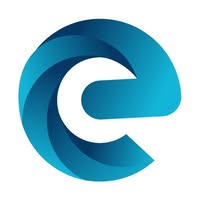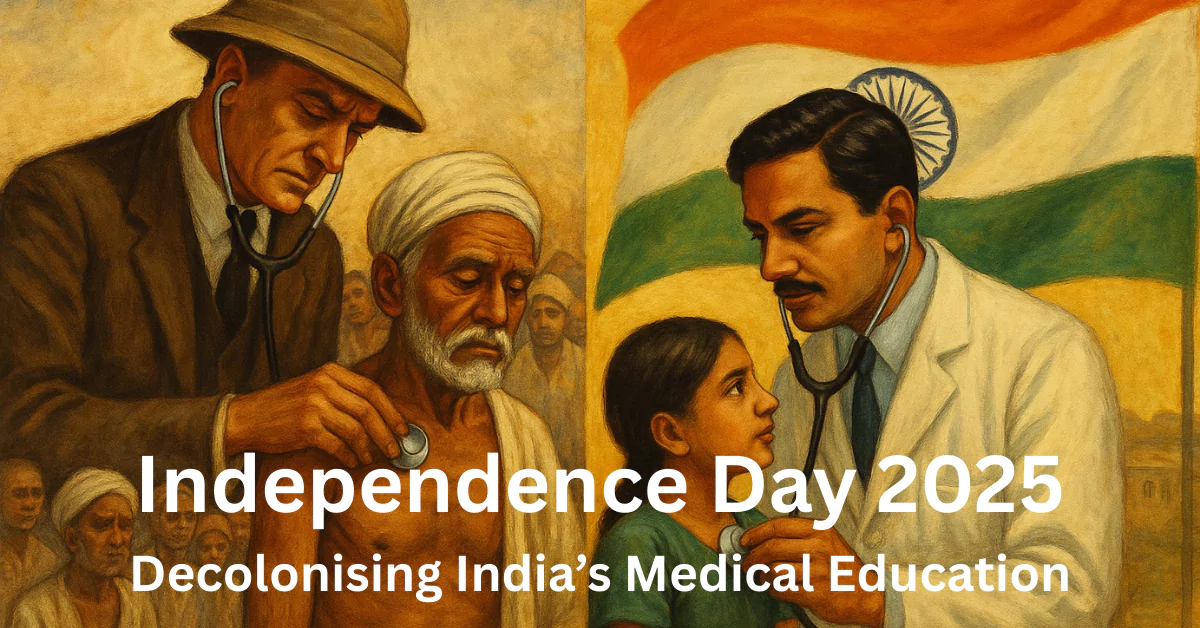Seventy-nine years ago, India awoke to “life and freedom”. Freedom was not just about politics, but about building a nation where every citizen could dream and achieve. Yet, even after decades of progress, one area still carries a heavy colonial imprint: medical education in India.
As we celebrate this Independence Day, it’s worth asking: has our medical system truly broken free from colonial-era thinking? Or do we still carry elitist structures, English-only barriers, and urban biases that exclude millions?
This blog reflects on the colonial legacy of medical education and the urgent need to decolonise, democratise, and indigenise how we train doctors in India. And why is there an urgency for India’s medical education revolution to claim our ancient glory, in harmony with modern medicine?
Colonial Roots of Indian Medical Education
Modern medical education in India did not start with independence. It was designed by the British for their own needs:
- In 1835, the British abolished the Native Medical Institution, where Western medicine was taught in Indian languages alongside Ayurveda and Unani.
- They set up Calcutta Medical College, where instruction was only in English. This move sidelined India’s own medical knowledge and cut off non-English speakers.
- Hospitals were also designed unequally: modern facilities for Europeans, second-class services for Indians.
Read Also: Top 10 Oldest Medical Colleges in India: Colonial Legacy to Modern Excellence
This colonial design created a two-tier healthcare system, world-class care for the elite, little for the masses. When India became free in 1947, life expectancy was just 40 years.
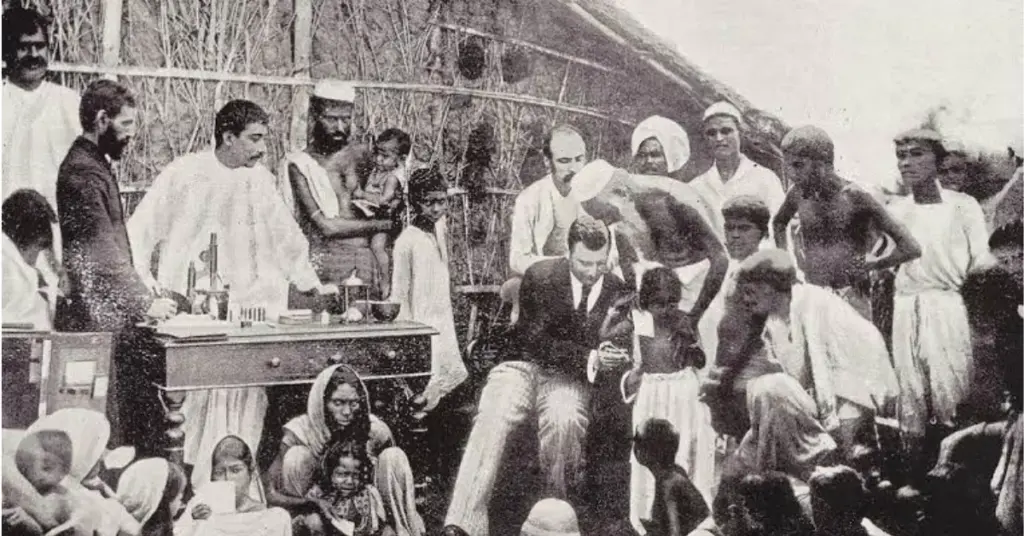
Independence, But Not Equality in Healthcare
After independence, India inherited this unequal system. Big hospitals and prestigious medical colleges grew in metros, but rural India remained neglected.
Even today, the imbalance is stark:
- 80% of doctors live in urban areas, but only one-third of India’s population is urban.
- Rural India, where over 65% of people live, often has no qualified doctors.
- The government admits the urban-to-rural doctor ratio is about 3.8:1.
All these inequalities still exist despite the doctor-patient ratio in India reaching the WHO target, and we all proudly call India “The Pharmacy of the World”
Clearly, true independence is incomplete if healthcare remains a privilege of the urban, English-speaking elite.
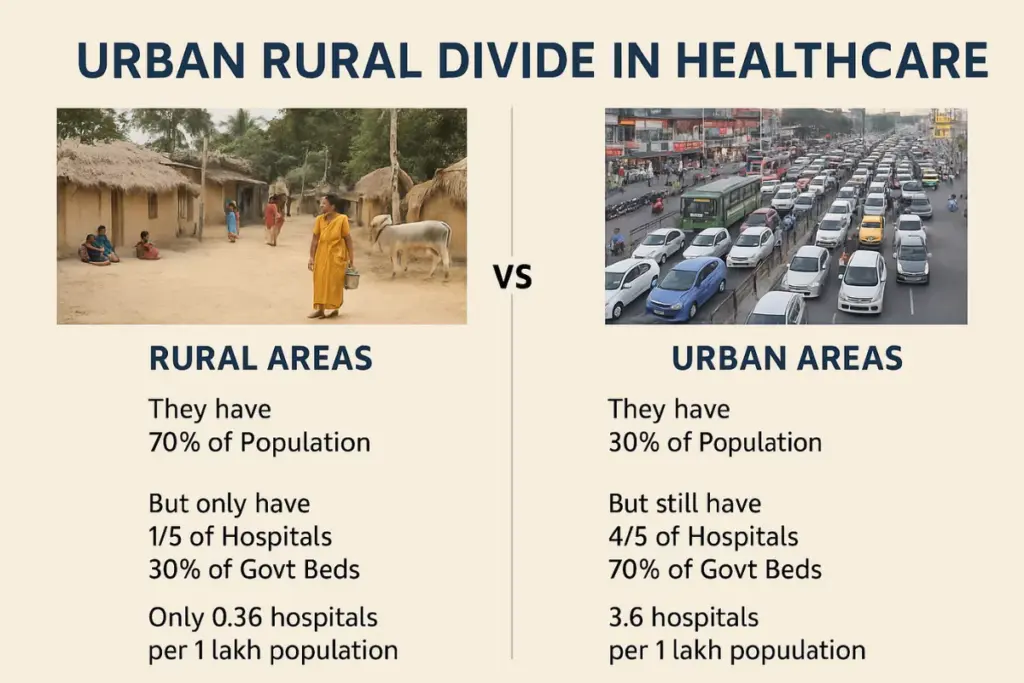
Read Also: India’s Public Health System Fails the Poor: Study Highlights Urban-Rural Gaps
Breaking Colonial-Era Elitism in Medical Education
Merit Over Money
For decades, private medical colleges sold seats at high fees. Only the rich could afford them. Today, NEET and centralised counselling have changed the game; admission is now based mostly on merit, not donations.
Affordable Seats for All
The National Medical Commission (NMC) Act 2019 caps fees for at least 50% of seats through its NMC Fee Guidelines. This means more affordable opportunities for middle-class and rural students.
Expanding Colleges and Seats
India has more than doubled medical seats in the last decade, from 50,000 to over 1,18,000. New AIIMS and government colleges are being built in every state.
Service Bonds and Rural Training
Young doctors are encouraged (and sometimes required) to work in villages. The MBBS curriculum now includes community health exposure from the first year. Students adopt villages, run health camps, and see rural healthcare realities firsthand.
These reforms are slowly dismantling elitist barriers. Becoming a doctor is no longer the privilege of a few; it’s a possibility for any talented Indian.
Indigenising the Curriculum: Bringing Ayurveda and Yoga Back
India has a rich tradition of medicine, from Charaka’s principles of ethics to Sushruta’s surgical techniques. Yet, colonial policies sidelined Ayurveda, Yoga, and other systems.
Change is happening:
- New MBBS students may take the Charak Shapath instead of the Hippocratic Oath.
- Yoga has been added to the MBBS foundation course.
- Plans for an integrated MBBS-BAMS course are underway, blending modern and traditional systems.
- Departments of Integrative Medicine are being set up in medical colleges.
This is not about rejecting modern medicine, but about combining global science with India’s civilizational wisdom.
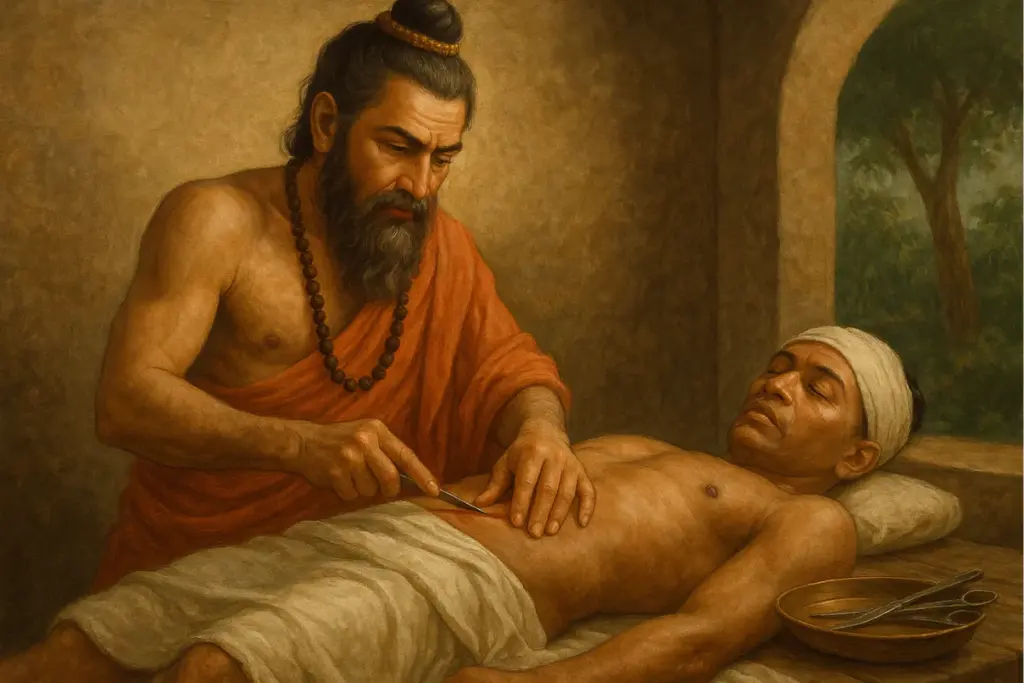
Teaching Medicine in Indian Languages: A True Freedom
Perhaps the strongest colonial shadow is the dominance of English-only teaching.
- In 2022, Madhya Pradesh launched MBBS textbooks in Hindi for the first time.
- Tamil Nadu, Maharashtra, and UP are exploring regional language medical education.
Why does this matter?
- Students understand better in their mother tongue.
- Doctors can communicate more effectively with patients in villages.
- It removes the unfair disadvantage rural students face just because they didn’t grow up in English-medium schools.
Yes, challenges remain, quality textbooks, trained teachers, and bilingual balance. But the movement is clear: bhasha swaraj (language freedom) is coming to medical education.
Restoring the Spirit of Service in Medicine
Colonial medicine was about control. Later, commercialisation made healthcare a profit-driven business. But Indian tradition sees medicine as seva (service).
- Charaka taught doctors to serve the poor without bias.
- Independence leaders like Gandhi emphasised rural health and prevention.
- Today, programs like Ayushman Bharat and rural service bonds remind us that healthcare must be universal.
When young doctors step into villages, when medical education embraces empathy, when patients are seen as human beings and not as “customers”, we reclaim the true spirit of freedom.
Treating in the Spirit of Freedom
On this 79th Independence Day, let’s remember: “freedom is not just political. It is also intellectual, cultural, and social.”
Decolonising medical education means:
- Access for all students, not just the elite.
- Regional languages alongside English.
- Integration of Ayurveda, Yoga, and modern medicine.
- Equity in healthcare, reaching every village and town.
If we can achieve this, we will finally honour the dream of freedom fighters, a Swasth Bharat (Healthy India), where healthcare is not a privilege but a right.
This Independence Day, let every medical student pledge: I will treat my people, in my language, with compassion, and with pride in my roots.
Jai Hind!
